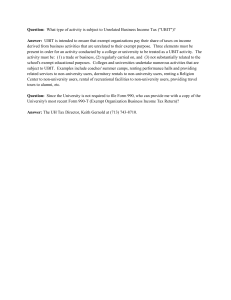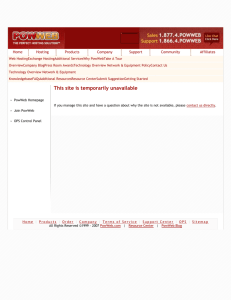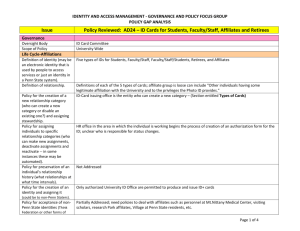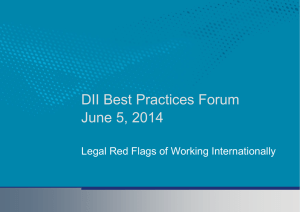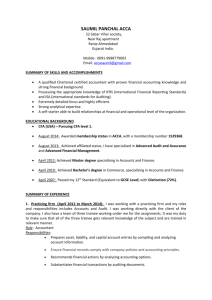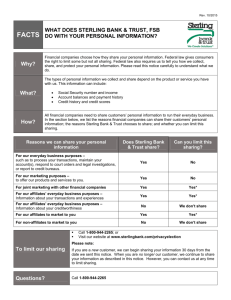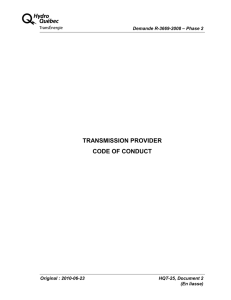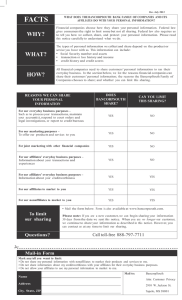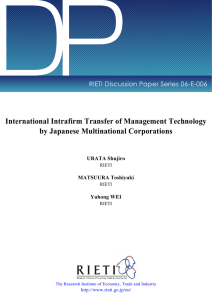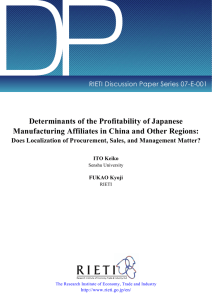Affiliates/Chapters
advertisement
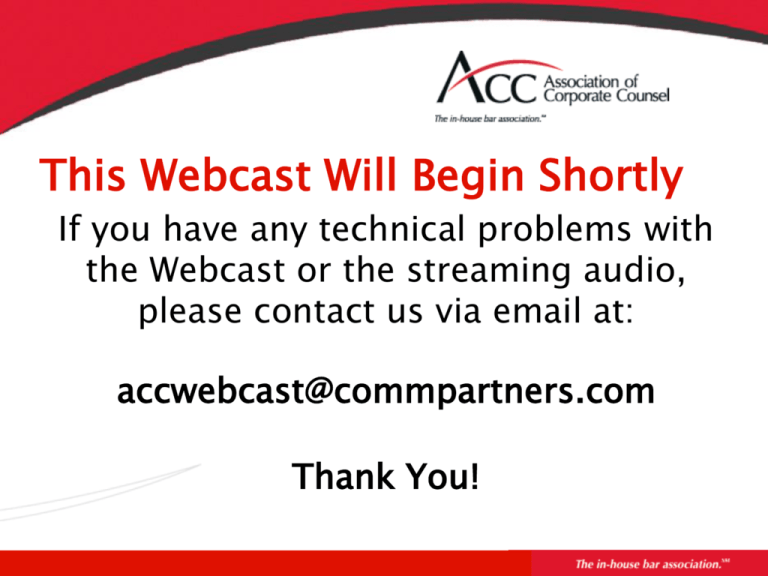
This Webcast Will Begin Shortly If you have any technical problems with the Webcast or the streaming audio, please contact us via email at: accwebcast@commpartners.com Thank You! NONPROFIT ORGANIZATION AFFILIATES Presented by ACC’s Nonprofit Organizations Committee and sponsored by Pillsbury Winthrop Shaw Pittman, LLP Association of Corporate Counsel www.acca.com Page 3 Presenter: Jefferson C. Glassie, Partner Pillsbury Winthrop Shaw Pittman, LLP Page 4 Structure of Nonprofit Organizations Nonstock corporations Membership associations or charities Tax exempt under I.R.C. § 501(c)(3), (c)(4), and (c)(6) Complex structures to maximize legal compliance, risk management, efficiencies Page 5 Wide Range of Affiliates and Issues Main organization, including divisions Supporting organizations, including charitable foundations For-profit subsidiary Political action committee Allied organizations Affiliates/Chapters – local, state, regional International affiliates Corporate relations Business forms – LLC, partnership, joint venture Page 6 Main “Parent” Organization Unincorporated association Nonprofit, nonstock corporation Tax exempt Articles of Incorporation Bylaws Policies and Procedures Divisions, sections, task forces Contracts with Affiliates/Chapters Spin off “subsidiaries” for tax, lobbying/political, and liability reasons Alliances Page 7 Supporting Organizations Typically a § 501(c)(3) supporting a § 501(c)(6), but can also support a § 501(c)(3) Usually no members Conducts charitable, educational, research activities Parent appoints majority or all of Board Section 509(a)(3) public charity status Often staffed by parent (UBIT issue re management fees) Can receive tax deductible charitable contributions Note other non-(501)(c)(3) “subsidiaries”, e.g., certification Page 8 For-Profit Subsidiary Established as stock corporation Parent usually is sole stockholder Created to minimize tax exemption risks to parent Minimize liability risks (note: piercing corporate veil) Conducts unrelated activities, e.g., marketing or other business activities Often staffed by parent (note UBIT issue) Dividends not taxable to parent; but if > 50% stock owned by parent, royalties, interest, rent are taxable to parent Page 9 PAC’s Political Action Committee, or separate segregated fund Usually connected to Section 501(c)(6) or (c)(4) within FEC rules Conduct political campaign activities, e.g., raise and disperse campaign contributions under FECA No members, but usually have bylaws and required to have treasurer (not usually incorporated) No contact with §501(c)(3) organizations Page 10 Allied Organizations Loose affiliations Sometimes contractual Not usually incorporated, but if long term LLC is an option Sharing of expenses Consistent with allieds’ tax exempt status Examples: legislative coalitions, research activities, trade show sponsorships Page 11 Affiliates/Chapters Usually authorized in parent’s Bylaws – regional, state, local Sometimes corporate status murky, and best to clarify Can be separately incorporated need tax exemption file tax report (form 990) insurance requirements layer of liability protections Or, unincorporated association either separate, where chapter individuals liable or part of parent corporations and revenues/expenses on parent 990 Group tax exemption available Page 12 Chapters (con’t) Should have charter/affiliation agreement providing for use of parent’s name/logo dual memberships, if any use of parent’s content/lists obligations of parent/chapter any transfer of funds, handling of dues payments termination provisions Recommend policies and procedures to minimize risks, e.g., hotel and other contracts Page 13 International Affiliates Non-U.S. affiliates Recommend written affiliation agreement Can be like chapters, “sisters,” or members of umbrella organization Use and registration of intellectual property is important Page 14 Corporate Relations Wide varieties of corporate support Members – regular and associate Exhibitors Corporate sponsors – note UBIT issues Affinity/preferred provider programs Cause related marketing programs Note tax issues re royalties for affinity and cause marketing Page 15 Business Forms Used in business ventures Trade shows, publications, product development Joint venture and partnership similar – contractual in nature Limited Liability Companies – corporate protection, flexible “flow through” for tax purposes Tax Issues – exempt organizations must maintain “effective control” to ensure tax exempt treatment – some IRS guidance Certificate of Formation and operating agreement terms are important Page 16 The End Thank you! Jefferson C. Glassie, Esq. Pillsbury Winthrop Shaw Pittman, LLP 2300 N Street, NW Washington, DC 20037 202-663-8036 jeffglassie@pillsburylaw.com Thank you for attending another presentation from ACC’s Desktop Learning Webcasts Please be sure to complete the evaluation form for this program as your comments and ideas are helpful in planning future programs. You may also contact Jacqueline Windley at windley@acca.com This and other ACC webcasts have been recorded and are available, for one year after the presentation date, as archived webcasts at www.webcasts.acca.com. You can also find transcripts of these programs in ACC’s Virtual Library at www.acca.com/vl

